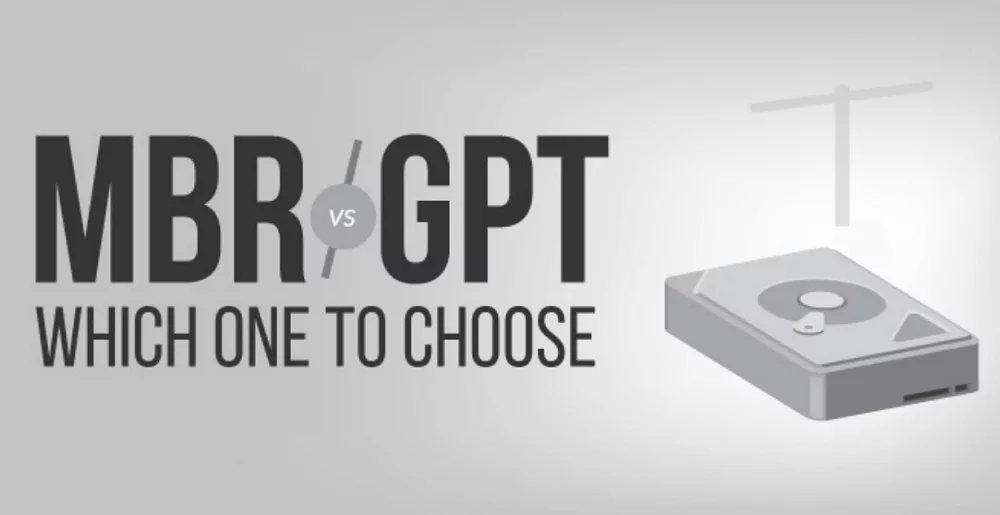In the realm of storage technology, two terms that often come up in discussions are GPT and MBR SSD. While both serve the purpose of managing storage on a device, they differ significantly in their approach and capabilities. Let’s delve into the details of each and compare them to understand which one might be more suitable for your needs.
Understanding GPT (GUID Partition Table)
What is GPT?
GPT, known as the GUID Partition Table, surpasses the older MBR scheme, providing enhanced flexibility and compatibility in modern systems.
Features of GPT
- Support for larger disk sizes (up to 9.4 zettabytes)
- Improved data integrity through redundancy and checksums
- Ability to define unlimited partitions
- Compatibility with UEFI (Unified Extensible Firmware Interface) systems
Understanding MBR (Master Boot Record) SSD
What is MBR SSD?
MBR SSD, on the other hand, refers to a solid-state drive that utilizes the MBR partitioning scheme. MBR has been around for decades and is still prevalent in many systems, though it has limitations compared to GPT.
Features of MBR SSD
- Compatibility with older BIOS (Basic Input/Output System) systems
- Support for up to four primary partitions
- Limited to a maximum disk size of 2 terabytes
- Lack of built-in data redundancy features
GPT vs MBR SSD: Key Differences
Partitioning Scheme
One of the fundamental differences between GPT and MBR SSD lies in their partitioning schemes. GPT allows for more flexible partitioning with support for unlimited partitions, while MBR is limited to four primary partitions or three primary partitions and an extended partition.
Storage Capacity
In terms of storage capacity, GPT outshines MBR SSD by supporting much larger disk sizes. While MBR is limited to 2 terabytes, GPT can handle disks up to 9.4 zettabytes, making it more suitable for modern storage needs.
Compatibility
MBR SSD holds an advantage in terms of compatibility with older systems that rely on traditional BIOS. However, GPT is increasingly becoming the standard, especially with the prevalence of UEFI systems, offering better compatibility with newer hardware.
Security
GPT offers improved security features compared to MBR SSD. It includes built-in data redundancy mechanisms and checksums, which enhance data integrity and protection against corruption.
Performance Comparison
Boot Speed
In terms of boot speed, both GPT and MBR SSDs can deliver comparable performance. However, factors like SSD type and system configuration also play a role.
Read/Write Speed
The performance difference between GPT and MBR_SSD in terms of read/write speed is negligible. Both can leverage the full potential of modern SSD technology, delivering fast data access and transfer rates.
Advantages and Disadvantages
GPT Advantages
- Support for larger disk sizes
- Enhanced data integrity and security features
- Compatibility with modern UEFI systems
Advantages of MBR SSD
- Compatibility with older BIOS systems
- Simple and widely supported partitioning scheme
Disadvantages of GPT
- Limited compatibility with older hardware
- Complexity in managing partitions with multiple operating systems
Disadvantages of MBR SSD
- Limited storage capacity
- Lack of built-in data redundancy mechanisms
Which One to Choose?
Transitioning between GPT and MBR SSDs hinges on factors like system requirements and compatibility, favoring GPT for modern UEFI systems. However, if you’re working with legacy hardware or require compatibility with older systems, MBR SSD might be more suitable.
Conclusion
In conclusion, the choice between GPT and MBR SSD boils down to your specific needs and system configuration. While GPT offers advanced features and support for larger disks, MBR SSD remains relevant for compatibility with older hardware. Evaluate your requirements carefully to make an informed decision that aligns with your storage needs.
FAQs
- Can I convert an MBR SSD to GPT without losing data?
- Yes, it’s possible to convert an MBR SSD to GPT without losing data using third-party partitioning tools. However, it’s crucial to back up your data before attempting the conversion to avoid any potential loss.
- Are there any performance differences between GPT and MBR SSD?
- In terms of performance, the partitioning scheme (GPT or MBR) doesn’t directly impact SSD speed. The performance difference lies more in the capabilities and features offered by each scheme rather than raw performance.
- Is GPT compatible with all operating systems?
- Generally, modern operating systems support GPT, including Windows (Vista and later), macOS, and various Linux distributions. However, some older operating systems may have limited or no support for GPT.
- Can I use GPT on older hardware with BIOS instead of UEFI?
- Although GPT is tailored for UEFI systems, it’s feasible to employ it on older BIOS hardware. Nonetheless, compatibility checks are crucial.
- What factors should I consider when choosing between GPT and MBR SSD?
- When choosing between GPT and MBR SSD, consider factors such as your system’s firmware (UEFI or BIOS), storage requirements, compatibility with other devices, and any specific features or security needs you may have.








